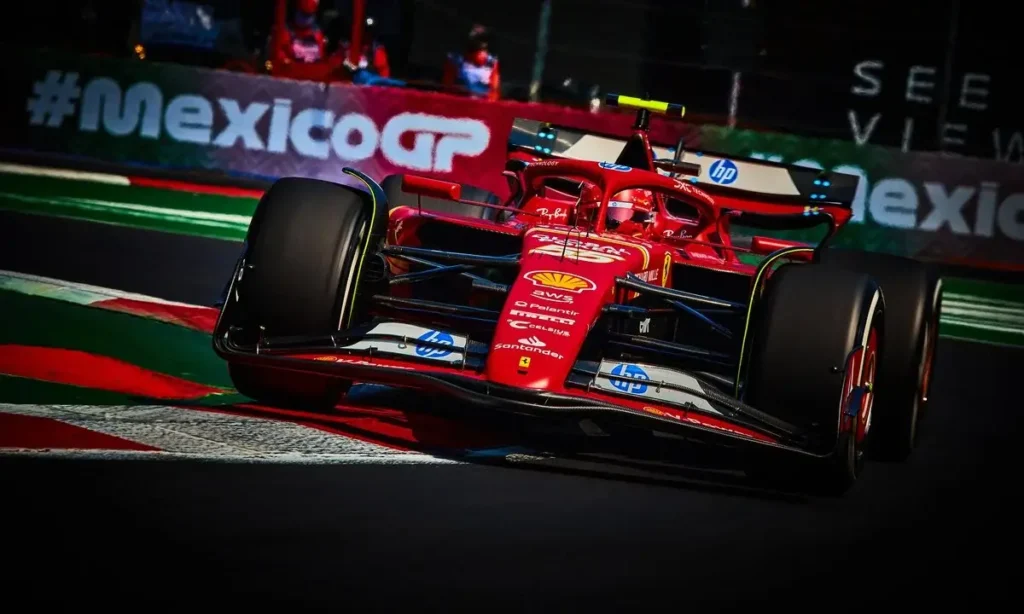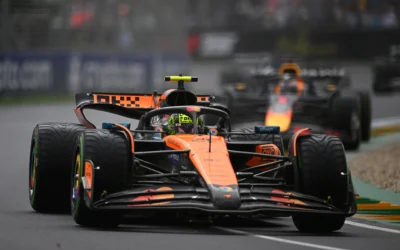Before last weekend, Ferrari had gone five full years without winning two races in a row: back in 2019 it was Leclerc who crossed the finish line in first position at Spa and Monza, in 2024 Maranello’s one-two is even more important since both drivers won. It was Carlos Sainz who won in Mexico, after his teammate Charles Leclerc did the same seven days prior in Austin. A decisive and well-deserved victory for the driver from Madrid, who had also taken an unexpected and important pole position for Ferrari in a weekend where Leclerc had a few more hiccups than he had hoped for. Lando Norris interposed himself between the two red cars, taking away the chance for the second one-two in a row. Still, a first and a third position remain, which carry significant weight in the Constructors’ standings.
Ferrari is now second in the Constructors and is the real anti-McLaren. The consistency of Leclerc and Sainz may be the extra weapon.
The SF-24 is now McLaren’s main antagonist in the Constructors’ Championship, with Red Bull totally gone and – by Max Verstappen’s own admission – never in real contention in recent weeks for the most coveted championship in the eyes of every ownership in Formula 1. Ferrari’s recovery could be considered sensational given that in two weekends Leclerc and Sainz have outscored McLaren by an impressive tally of 46 points and have moved into second place 29 points behind the leaders with four Grands Prix to go. Enrico Cardile’s former car has been put back on the right track with the upgrade packages introduced at Monza and Singapore, and confirmed in Austin and Mexico that the strides made should be considered very important.
Can Ferrari’s SF-24 now be considered, globally, the best car on the grid? At Maranello they don’t want to hear about it, because what is sure is that Sainz’ victory at the Mexican GP would have been much more complicated to obtain without the important skirmishes between Verstappen and Norris in the first stint. In fact, the latter showed the best race pace after the switch to hard tires and a certain drop in asphalt temperature; on the other hand he was certainly slowed down by Max Verstappen in the first part of the race, where the Ferrari managed to open that gap that guaranteed him the victory with Sainz.

Lando Norris’ car was fitted with the new floor all weekend, which was not expected at least at the beginning of the weekend, a sign that the important improvements made with the new parts were seen already in FP2. On his behalf, Leclerc had to manage a lot, with a continuous lift-and-coast that prevented him from keeping up with the pace of his teammate also due to the difficulty of keeping the tires in the optimal window. It should also be noted that skipping FP1 and not being able to do much work on set-ups in FP2, due to the hour and a half devoted mainly to testing Pirelli tires, did not help the Monegasque driver. Already in Austin Leclerc had adapted less easily to the new balance generated by the new front wing that was far more flexible than the specification that had debuted in Singapore: only with the setup changes between Sprint and Main Race he found that something extra that had allowed him to dominate on Sunday. In Mexico, very little time was available for the Monegasque, who entered qualifying in the dark in terms of setup, so much so that he did not perform as well as his teammate.
Mexico removed all doubt about the SF-24’s progress, but will Interlagos be the one to close the loop?
Ferrari is clearly the anti-McLaren and after the latest evolutions brought to the SF-24, th gap to the top in certain stages and technical areas seems to have almost gone to zero. Furthermore the consistency of the driver duo may be the extra weapon in the once unhoped-for chase for the constructors’ championship, which Maranello has been missing since as far back as 2008. If the car is able to compete for victory, the possibility of seeing both red drivers on the podium seems higher than the possibility of seeing Norris and Piastri in the top 3, and that isn’t a small advantage. One aspect in which McLaren, with Piastri’s inexperience and an inconsistent Lando Norris, and Red Bull, who has to rely on a struggling Perez, appear lacking compared to the Maranello.

At Interlagos it is very likely that we will see both Mclarens equipped with the latest upgrades, to attempt to reply to Ferrari’s onslaught in the last two rounds. The Brazilian track will close out the triple header that began in Austin, and it is quite complete given that there are slow sections and also long, leaning turns of medium and high speed, as well as weather all yet to be assessed especially for the Sunday race. Red Bull and Max Verstappen left of Mexico with very few positive insights, other than the one related to the few points lost by the Dutchman to Norris. In fact, the RB20 still lacks much technically compared to Ferrari and Mclaren even after the developments brought to Texas, which improved the British car in the balance between front and rear axles but did not significantly widen the window of operation.
That’s why we now see Max Verstappen constantly racing defensively, clinging to even incorrect manoeuvres to ruin his rival’s race. In a way this favours Ferrari, a clear ally of the three-time world champion. For their part, at Maranello they know they still have chances in Brazil to give continuity to the best technical moment of the season for the SF-24. As of right now only Qatar’s layout scares the engineers in Maranello. No updates are planned for Ferrari, with the engineers continuing to work on extracting the maximum from the SF-24 in what will be another Sprint Race weekend.




